It’s a nice still morning, so I thought I’d test the new Fuji 50 mm f/3.5 on some foliage. For comparison, I chose the excellent Sigma 35 mm f/1.2 Art lens on a Sony a7RIV.
Here’s the scene:
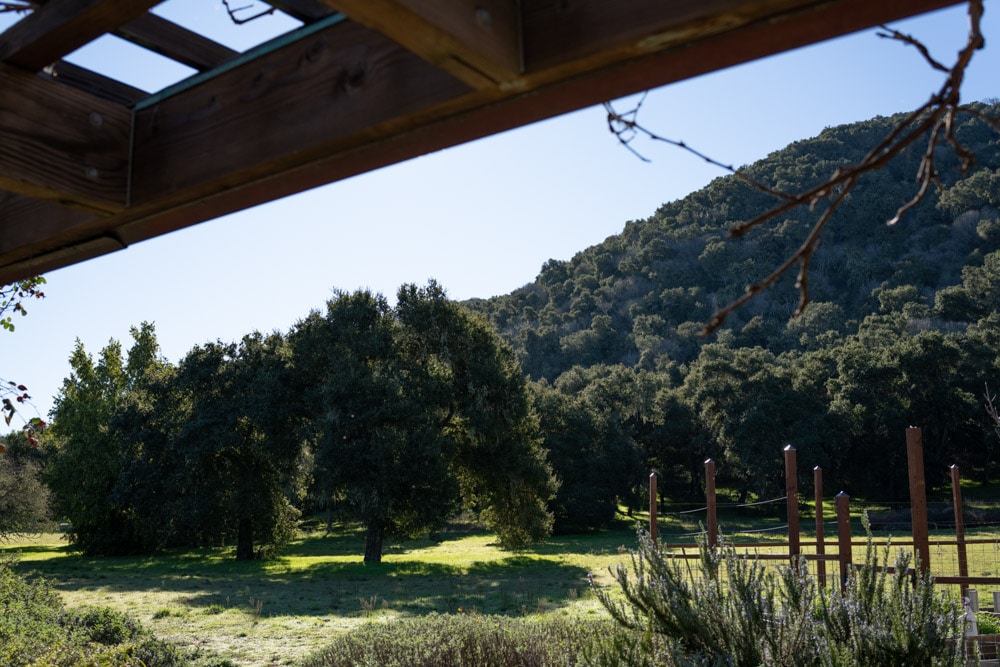
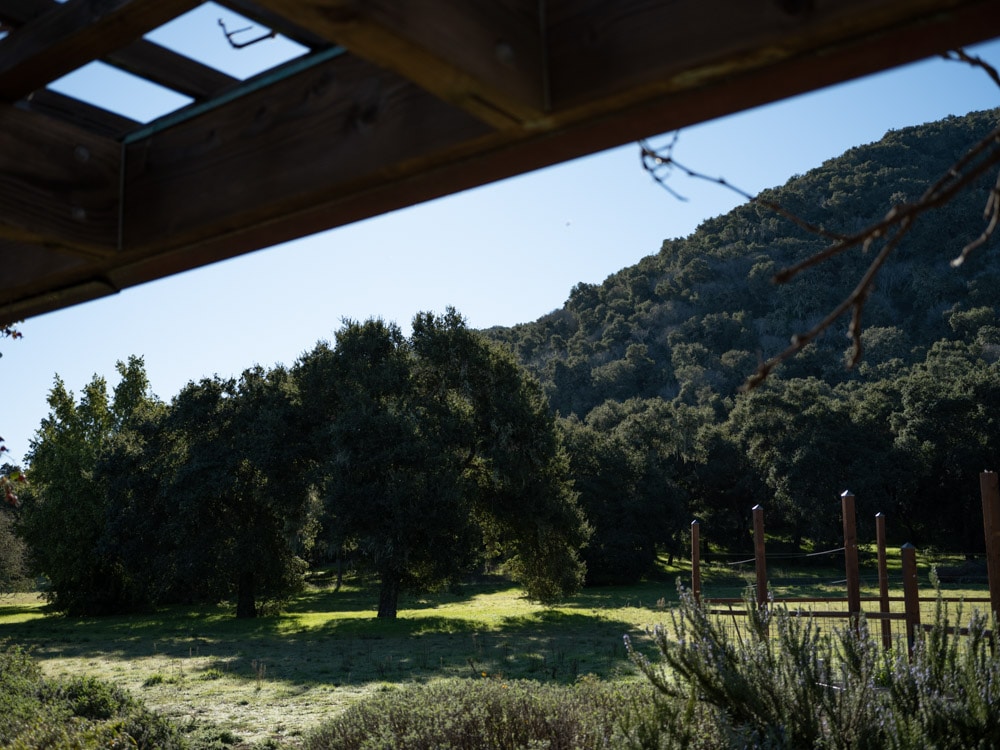
Making three shots for each variation and picking the sharpest, I exposed at base ISO 100 for both cameras. I used AF-S and the medium spot, focusing on the target grove of trees 47 meters from the camera.
Capture conditions were:
- Heaviest RRS legs
- Arca Swiss C1
- 2 second self-timer
- EFCS
Images developed in Lightroom, with default settings except:
- WB set to daylight
- Exposure to equalize brightness
- Adobe Color Profile
- Sharpening 20, radius 1, detail 0
- Pick the best of three images at each test condition
I did not try to defeat Lightroom’s silent distortion correction.
We’ll look at some tight crops.
If you’ve seen these here before, just jump to the images. If not, I need to spend some time telling you how to interpret them. They’re at roughly 250% magnification, enlarged to 700 pixels high on export from Lightroom. If you just want a rough idea of the differences, just look at the images as displayed in-line in the posts. However, if you wish to compare these images in detail, you should view these images by clicking on them to see the source files, then set your browser for 100% zooming. Even better, download them and make Photoshop stacks.
No matter what you do, these crops are all going to look horrible. I’m blowing them up so much so that they will represent the original file after JPEG’s discrete cosine transform has had its way with them. If you want to get a good idea of what the images would look like printed, get far away from your monitor. No, farther than that. Put a bunch of the images up on the screen and back up until the best one starts to look good. Then look at the others. There’s another reason why these images won’t look like the best thing the camera/lens combination can deliver. They’re demosaiced with Lightroom. Lightroom is not awful, but for a particular image, there are usually better raw processors. I use Lr because it’s a de facto standard, because I know it well, and because it’s got good tools for dealing with groups of images.
Here’s how to use these highly-magnified crops. The dimensions of the Z7 sensor is 9504×6336 pixels. If we make a full-frame print from the Z7 on a printer with 360 pixels per inch native driver-level resolution, like the Epson inkjet printers, we’ll end up with a 26.4×17.6 inch print. The 289×224 pixel crop you’re looking at will end up 0.8×0.68 inches. The Fuji crops are 399×309 since it is a higher-resolution sensor. Let’s imagine that you or your viewers are critical, and will look at the 27×18 inch print from about 18 inches (conventional wisdom is that the distance would be a little greater than that, or 28 inches (the diagonal), but you did buy a high-resolution camera for a reason, didn’t you?).
The next step is dependent on your monitor pitch, which you may or may not know. Turns out, you don’t have to know it. Just take the 250% crops and view then at 1:1. How high are they? Get out your ruler and measure, or just guess. Let’s say they are 6 inches high. 6 inches is about 7 times 0.8, so in order to view the crops the way they’d look from 18 inches on the print is to view them from 7 times as far away, or 10.5 feet.
Everything here scales proportionately. If the image on your screen is bigger than 6 inches, increase your viewing distance by the ratio of your image height to 6 inches. If you think your viewers are going to almost get their nose to that print and look at it from six inches, divide that 10.5 feet by 3, and look at the image on the monitor from three and a half feet away.
Usually I show equivalent apertures, but I thought I’d change things up a bit and show the images at the same apertures. If you want to look at equivalents, you can compare f/4 on the Sony with f/5.6 on the Fuji, f/5.6 on the Sony with f/8 on the Fuji, and so on.
Near the center of the frame:
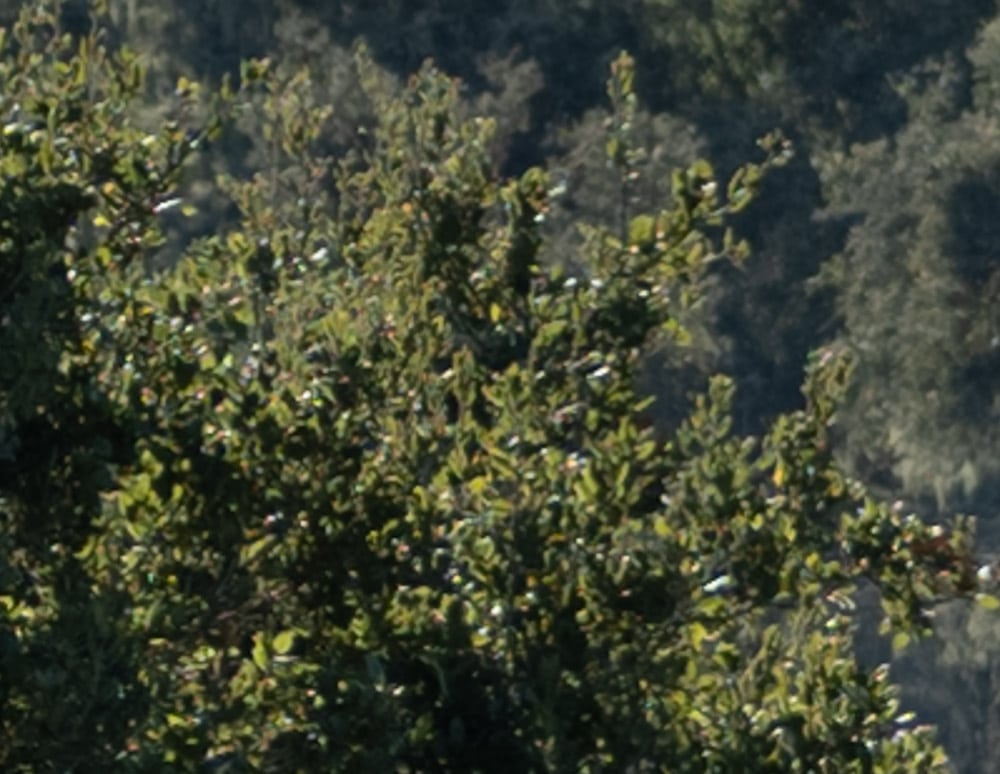
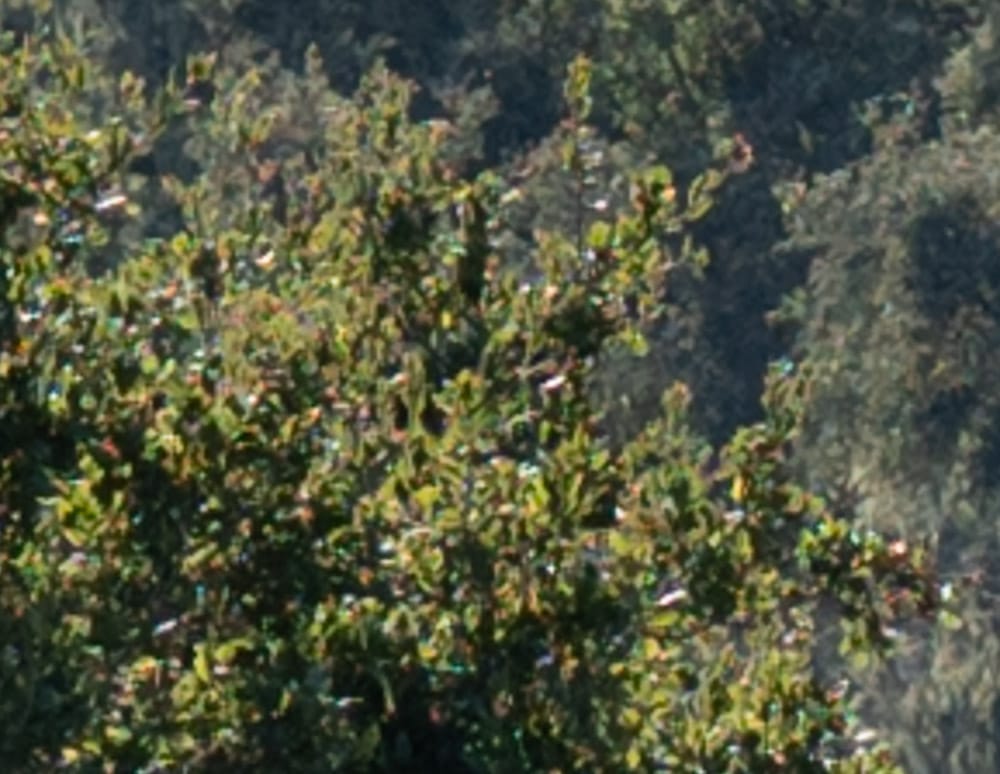
We’re mostly limited by the sensor here, and, since the Fuji sensor is bigger and has more pixels, it looks better. There is less false color in the GFX 100 image.
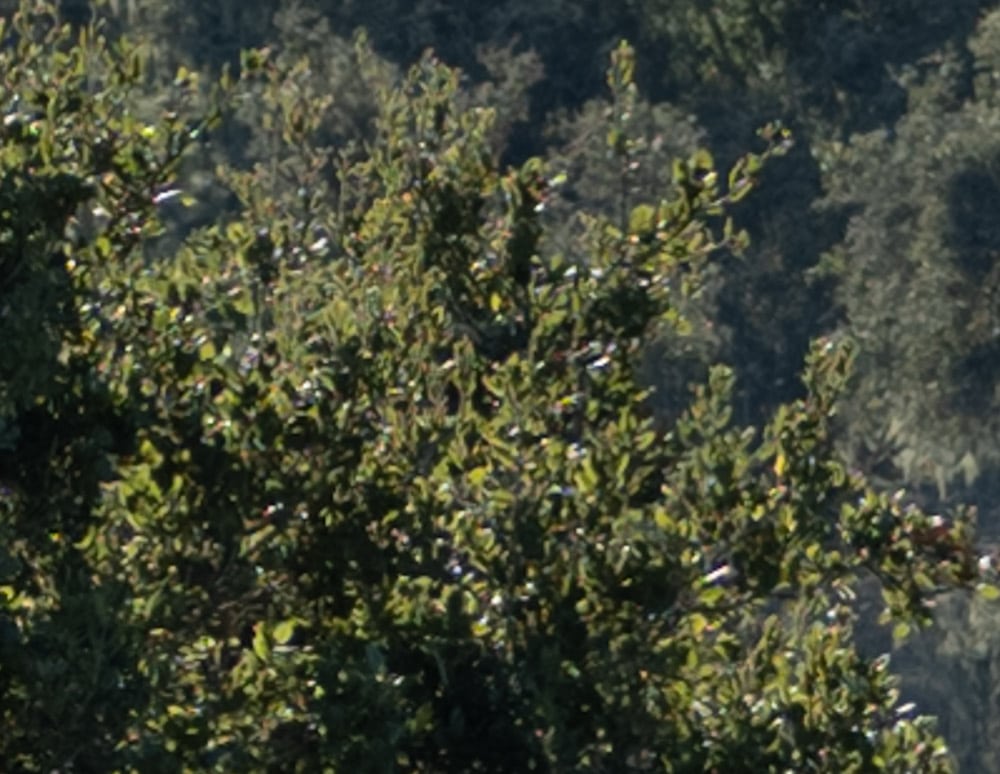
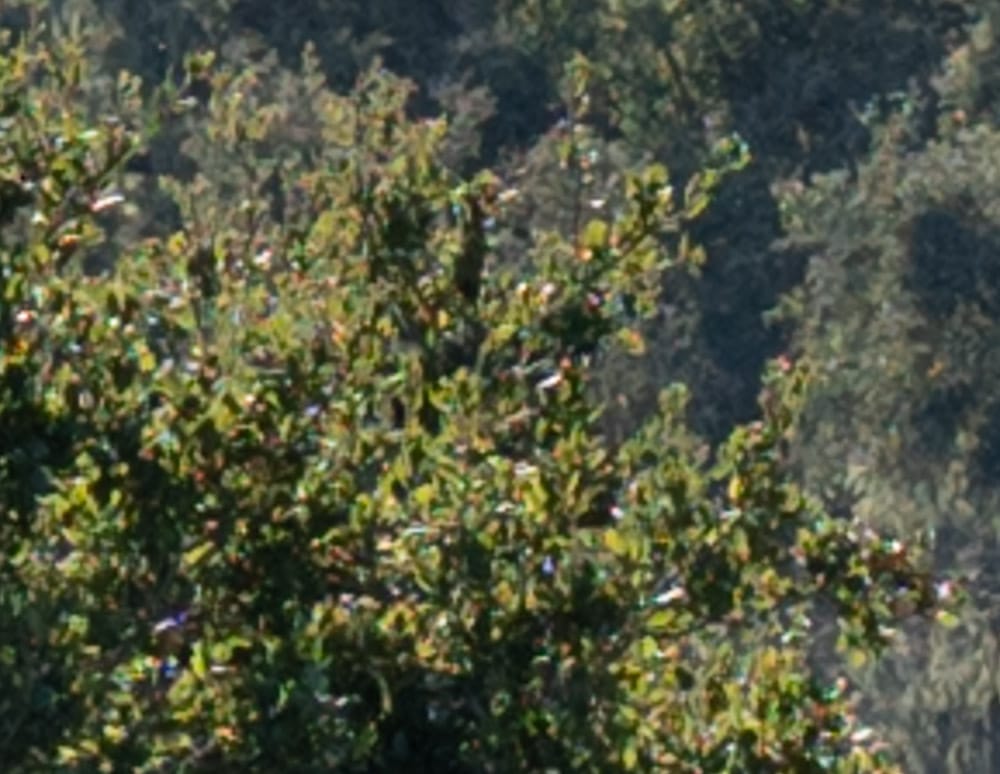
Same thing.
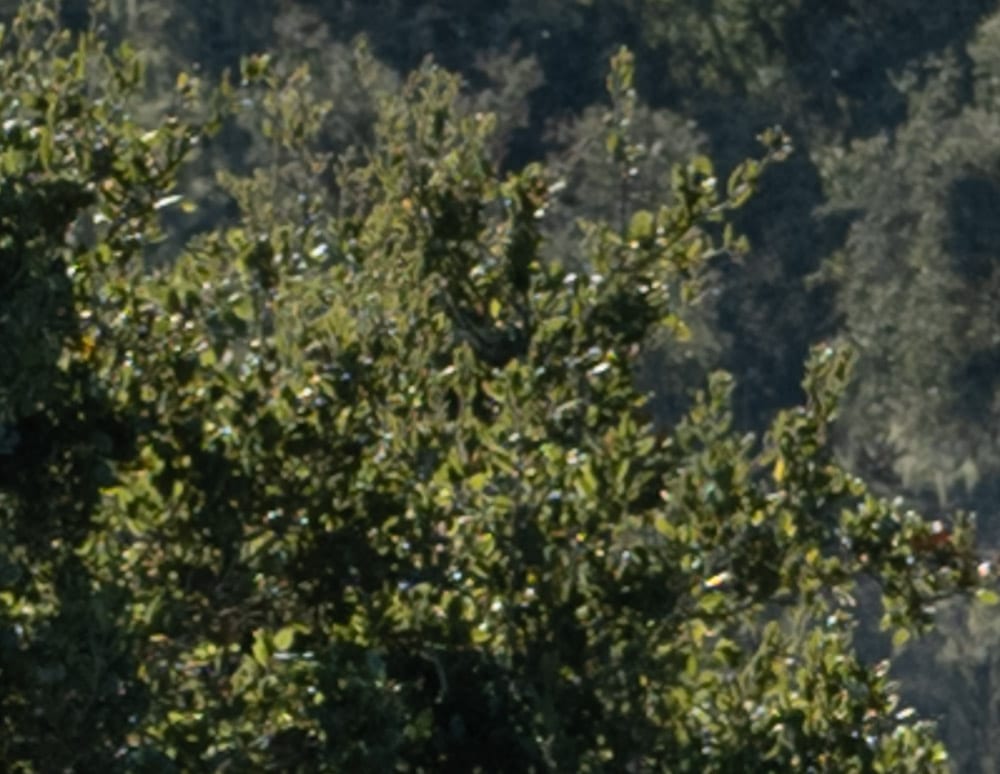
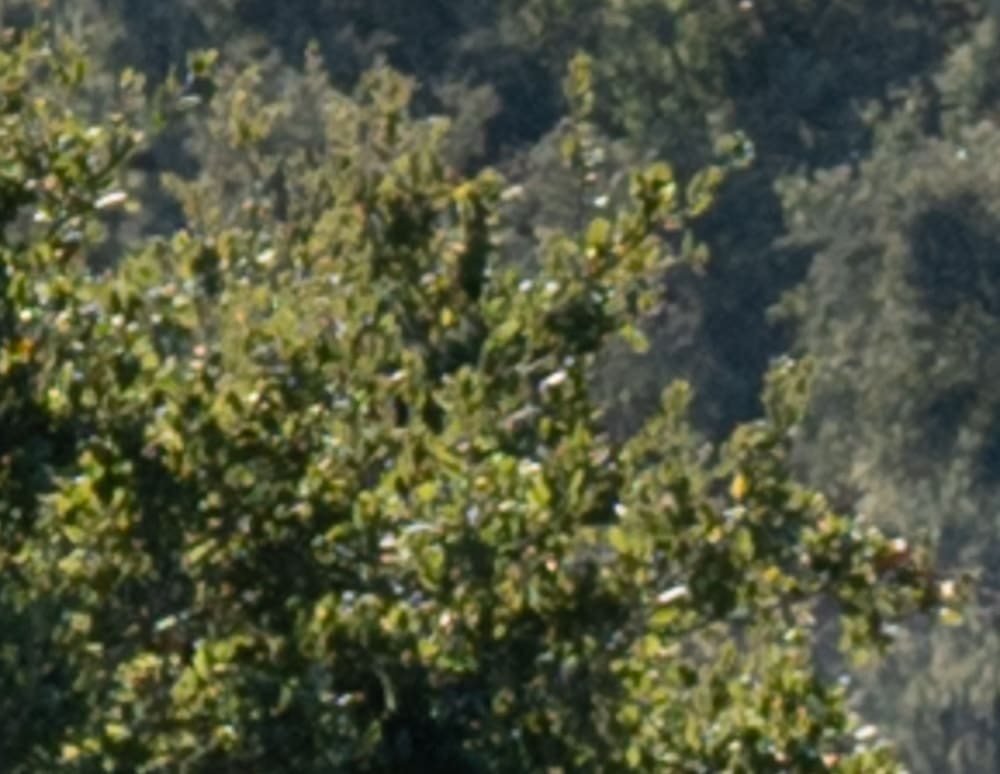
It looks like it’s going to stay like this.
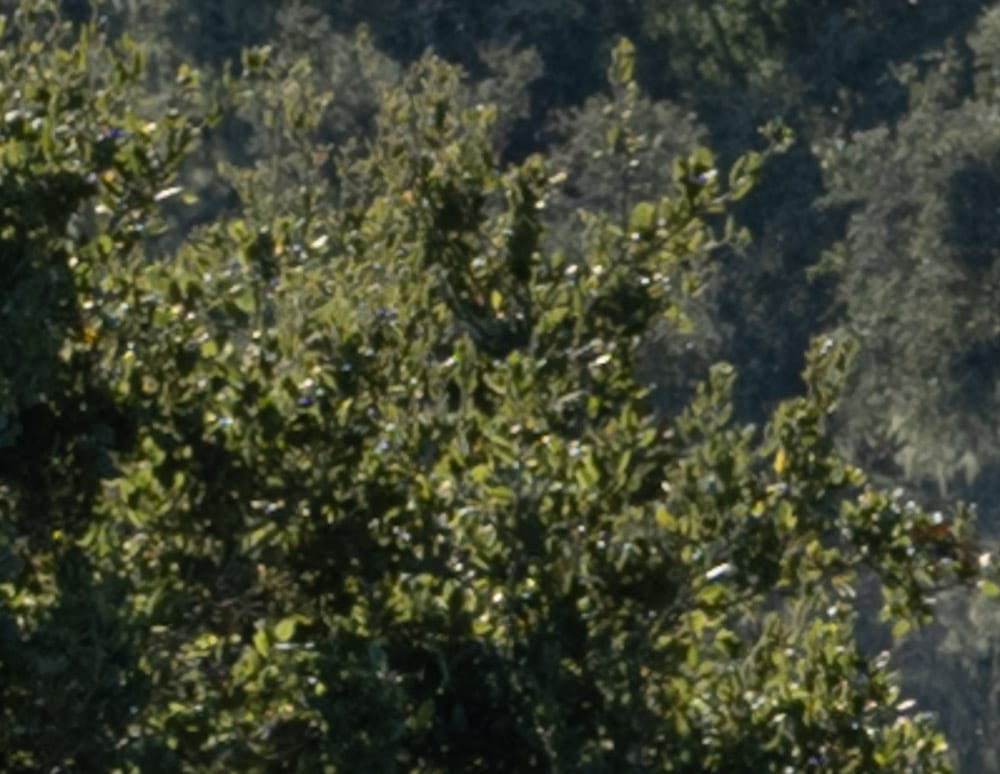
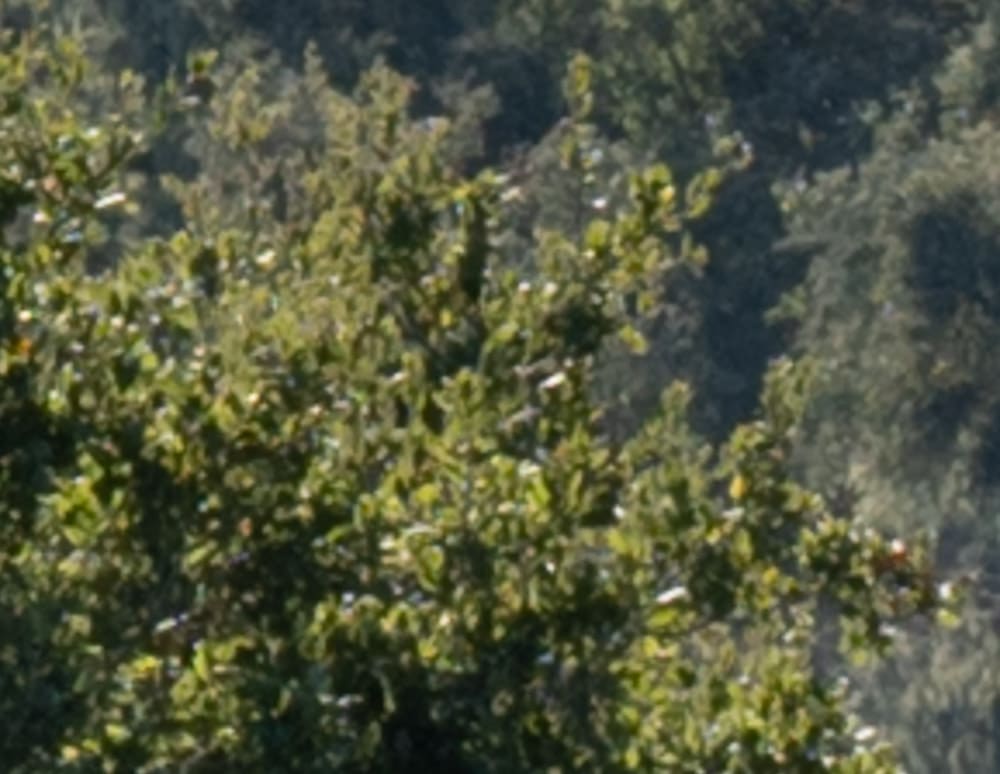
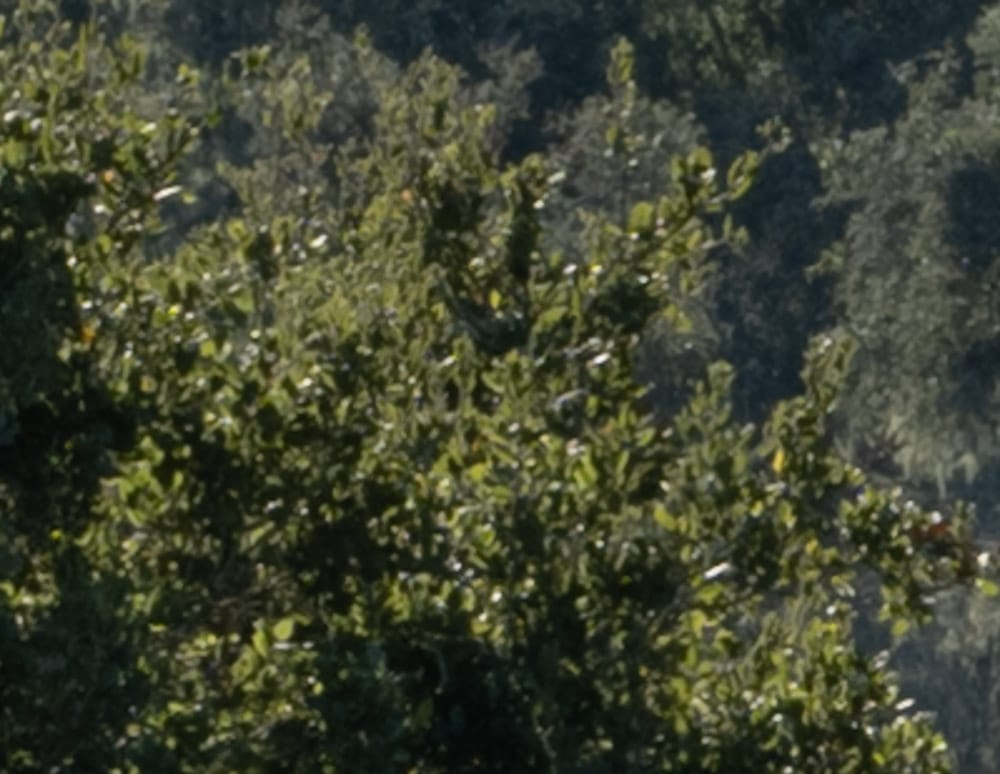
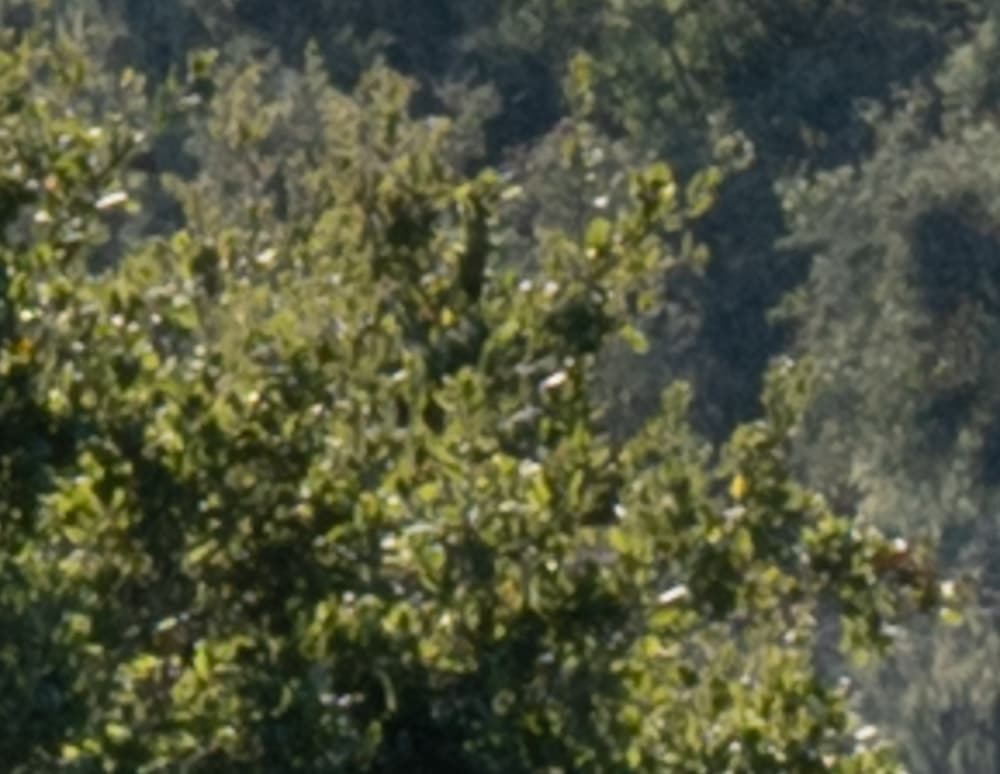
In the upper-right corner:
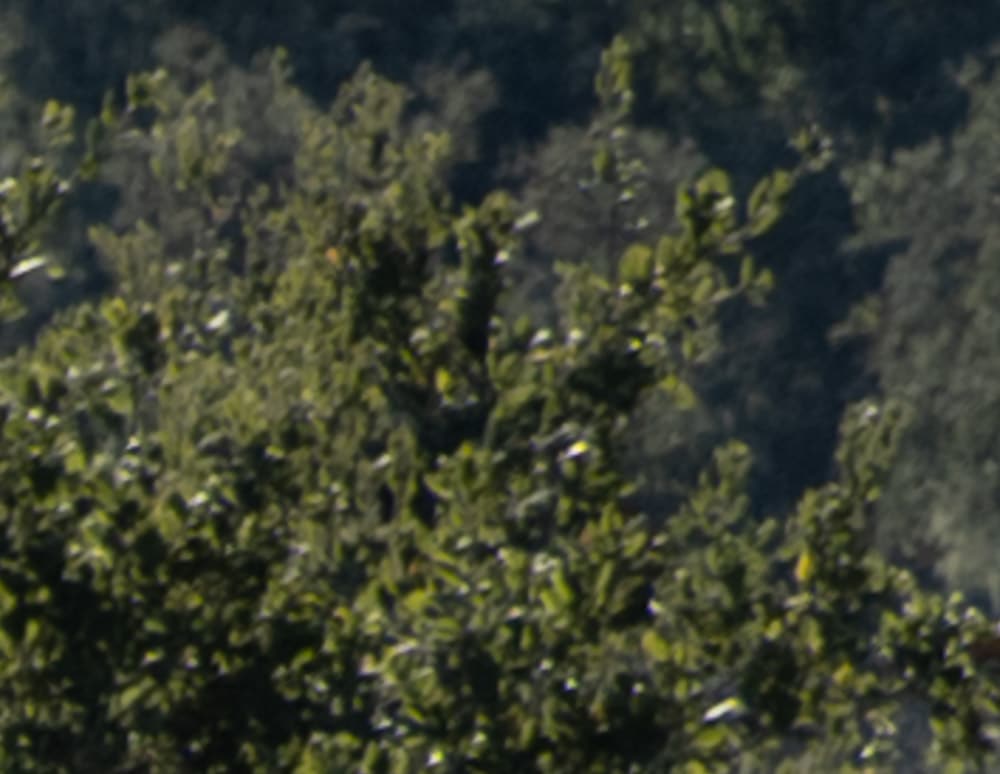
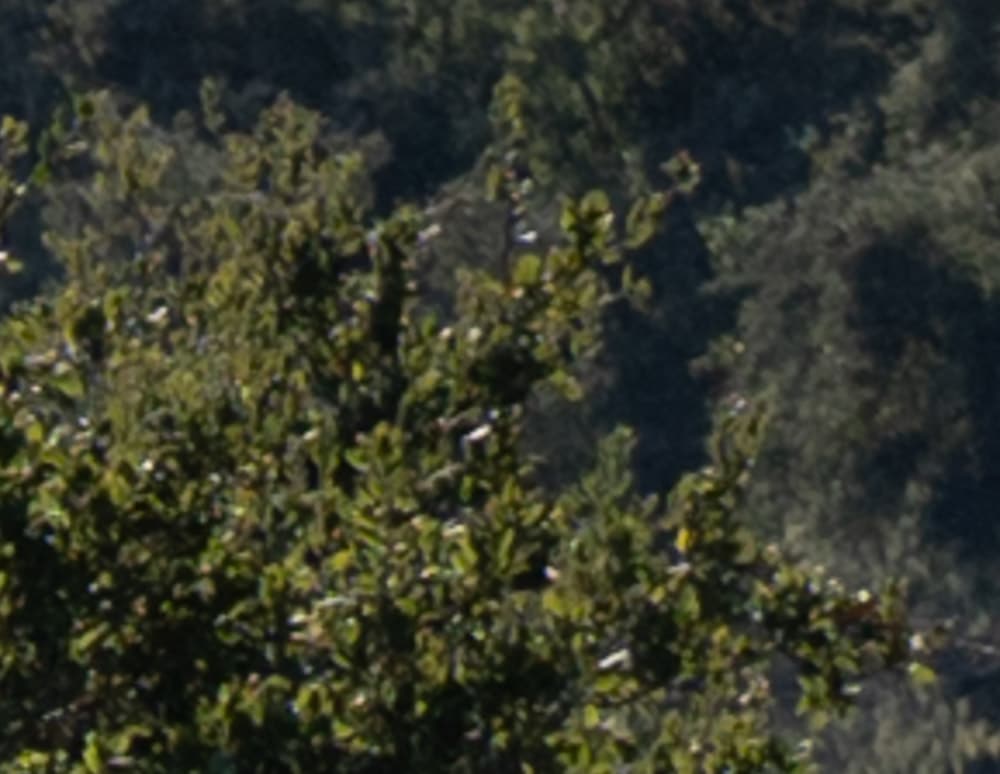
The Sigma lens is sufficiently sharp in the corners that it can overcome the resolution disadvantage of the smaller Sony sensor.
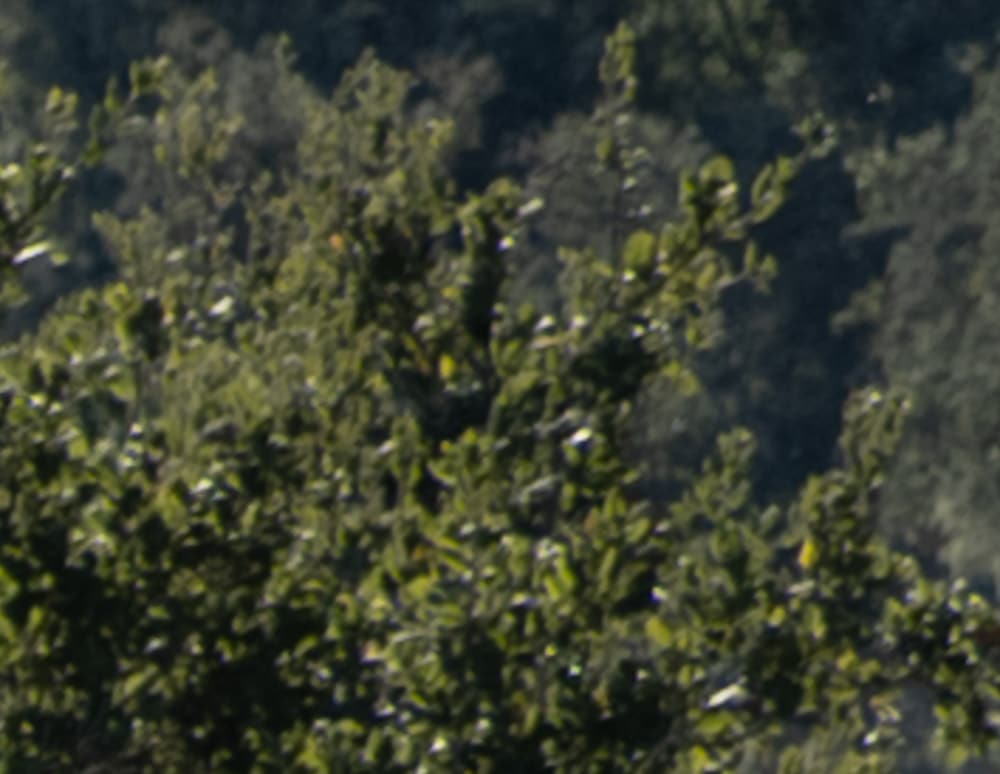
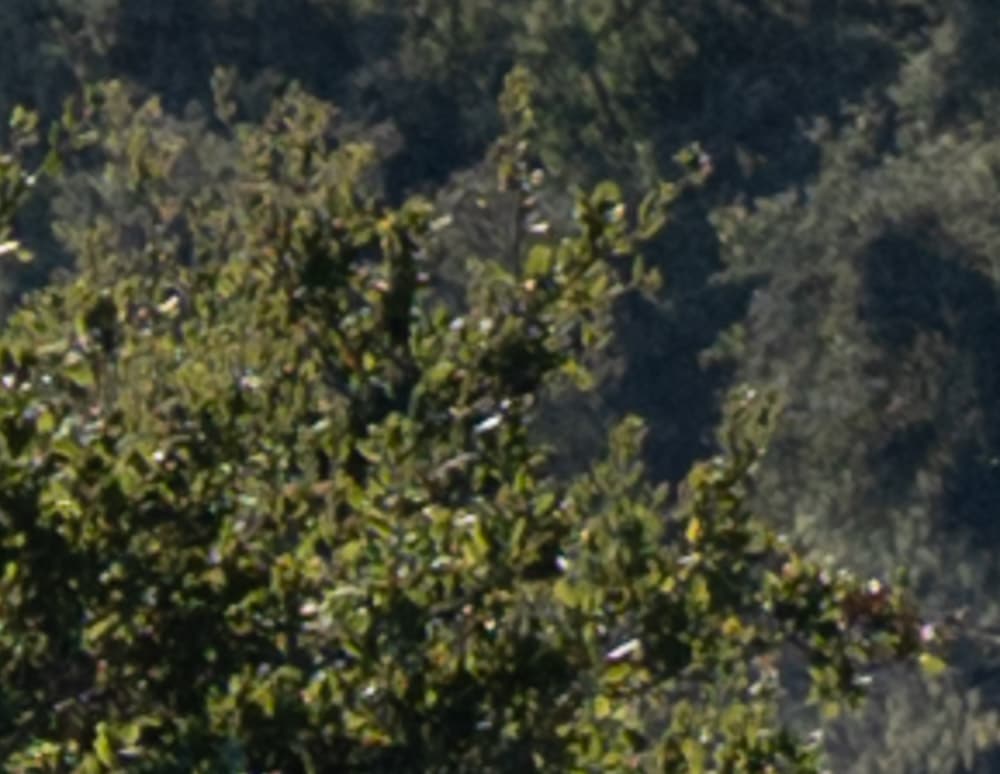
Same.
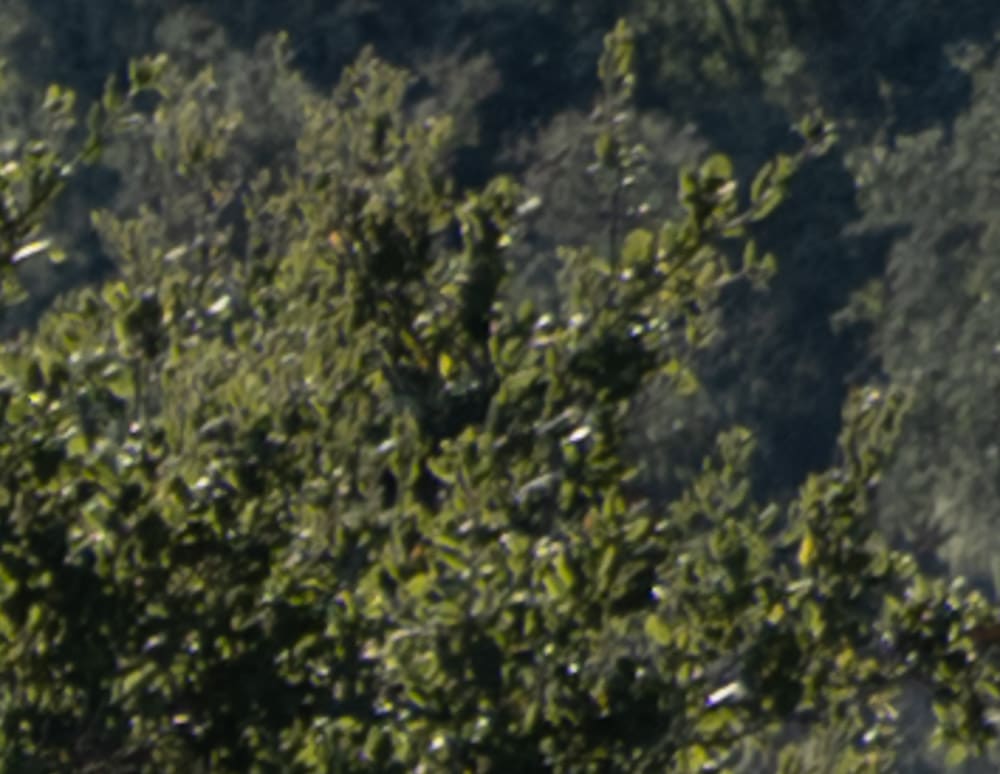
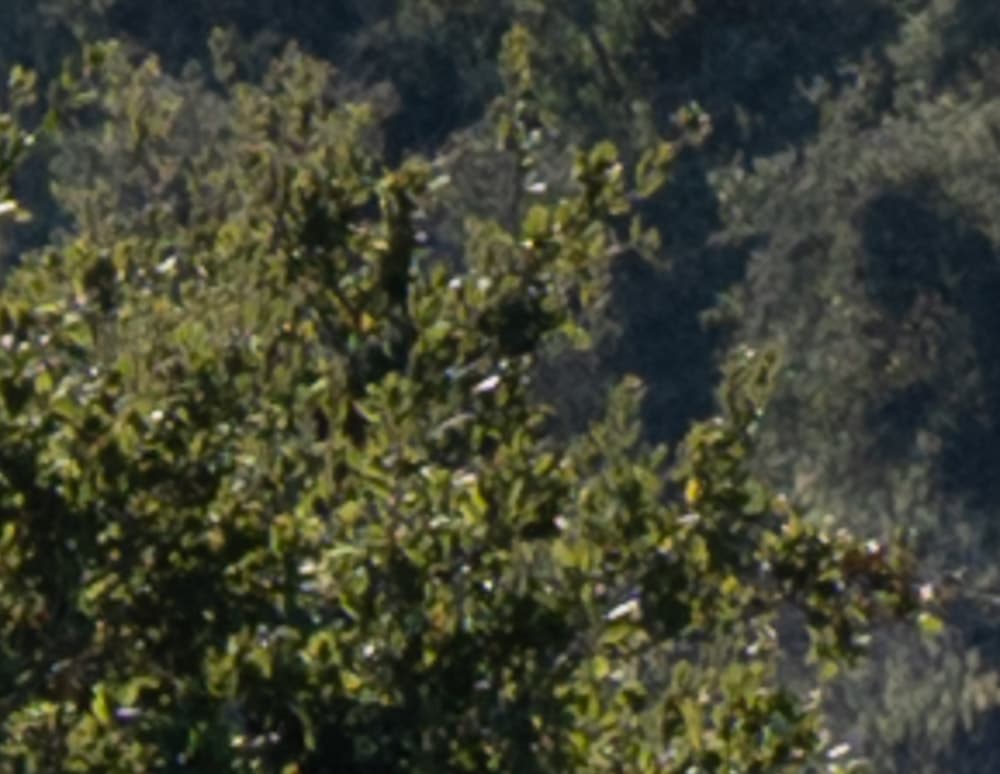
The smaller sensor with the sharper lens wins.
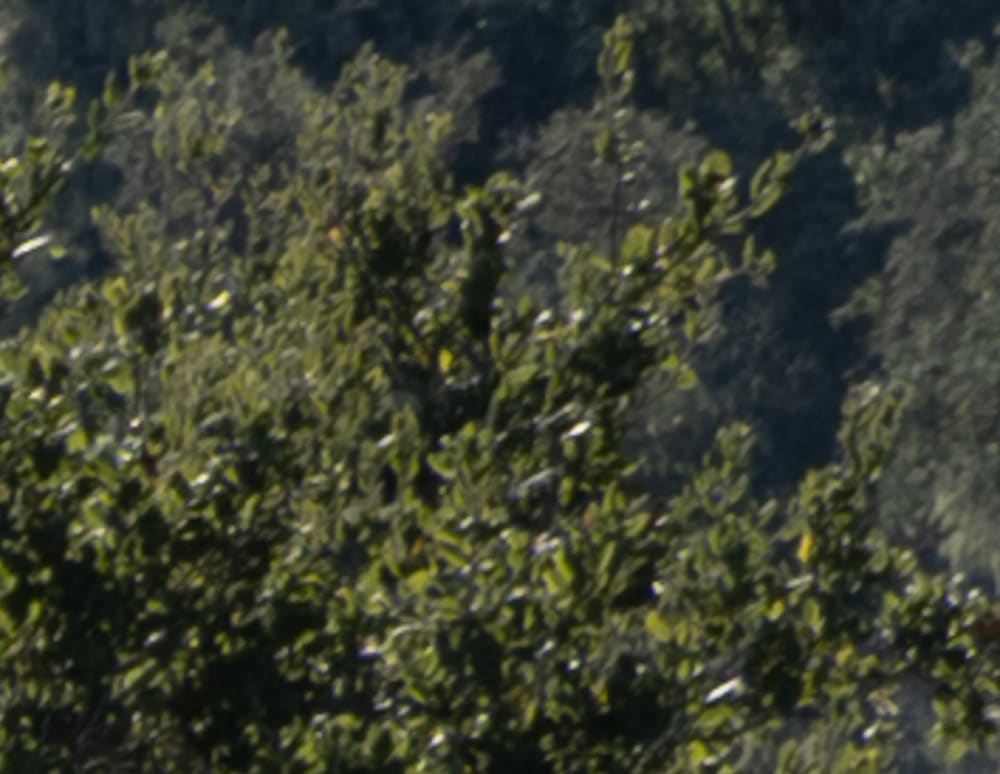
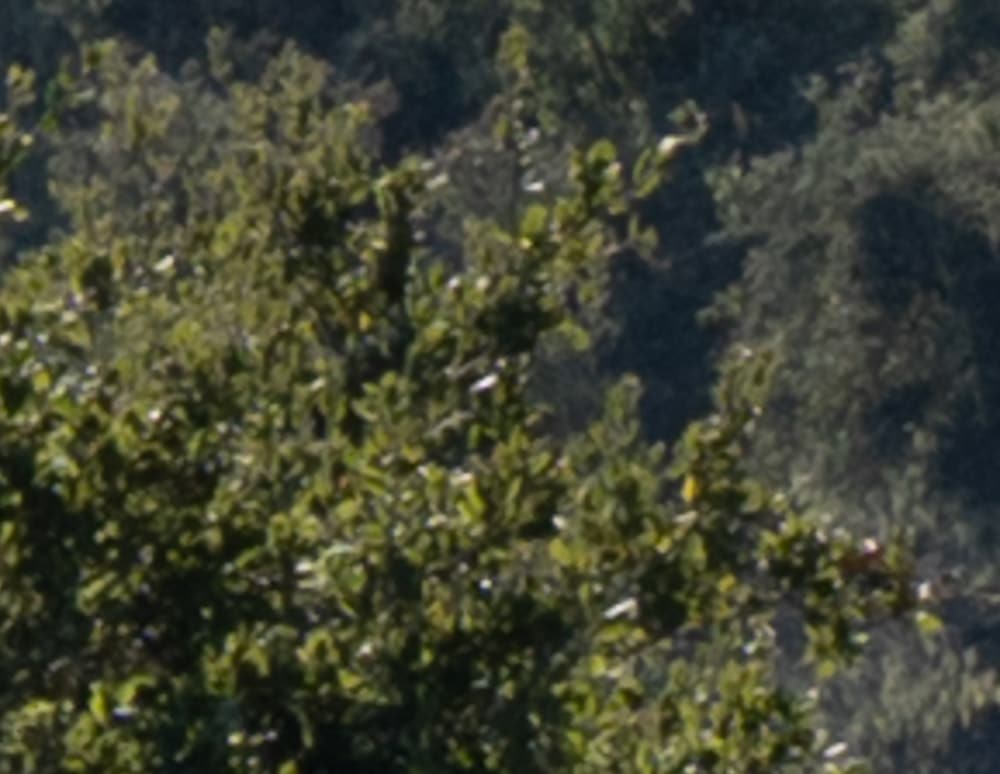
Getting closer.
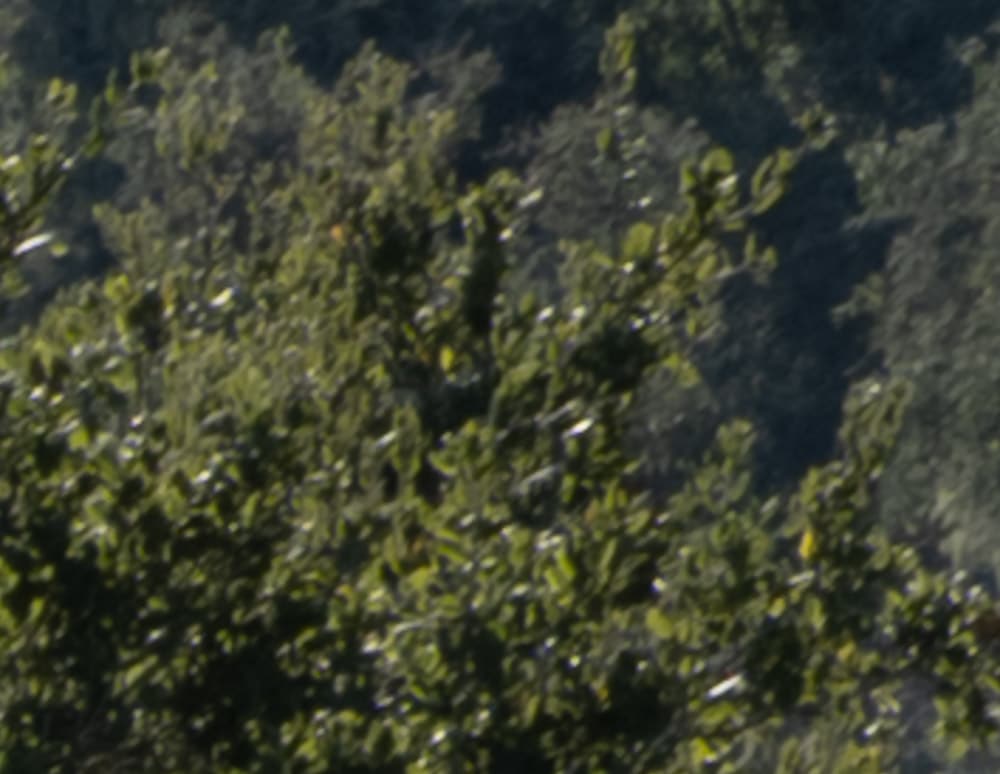
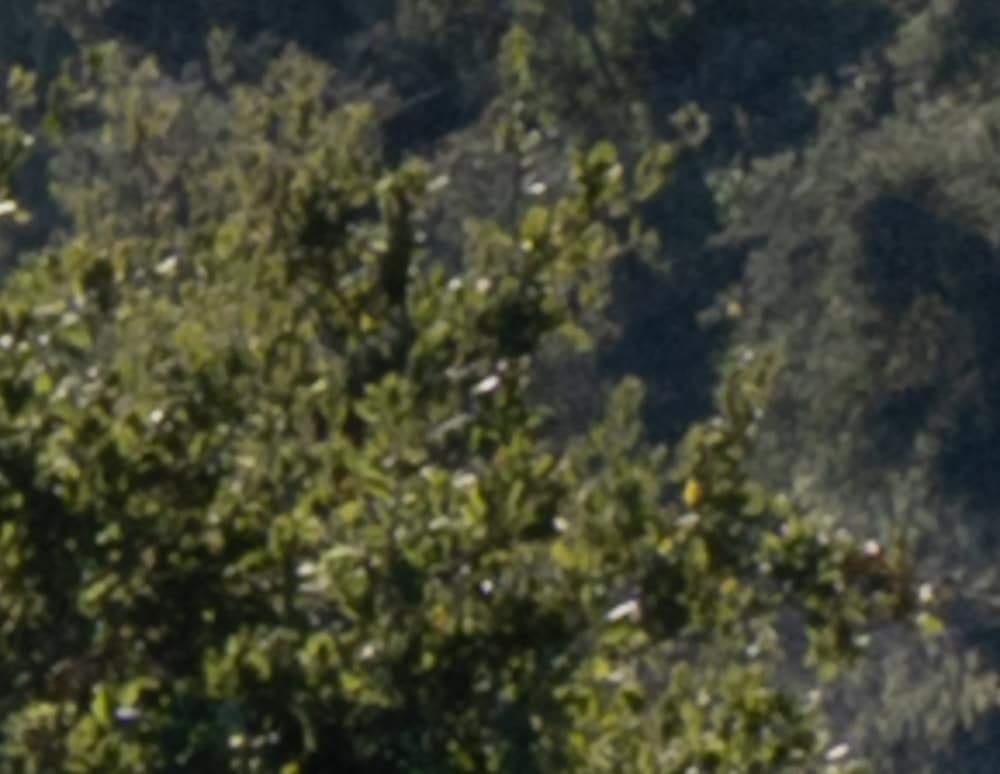
Now the larger sensor is the long pole in the tent.
These are both excellent lenses: the Sigma because of its high quality, and the Fuji because of the impressive price/performance tradeoff. I should point out that an a7RIV and the Sigma weighs a fair amount more than a GFX 50R and the Fuji 50/3.5.
Thanks for the test. The lenses are both great indeed.
Price performance wise the Sigma is better i would say… the Sigma is f1.2 and costs about the same… (3 stops more light + 3x lens area to control)
I would have liked to see the f1.2 -f2.8 quality of the Sigma in the test
and think of the weight of the fuji with a dedicated 1.2 lens on it… that does not exist.
The Sigma cost three times as much. For the bodies, however, that situation is reversed.
Ok! here – Netherlands
Sigma 1500€ fuji 1049 , but i see you can have a 500€ return – overlooked that.
That is a great price indeed.